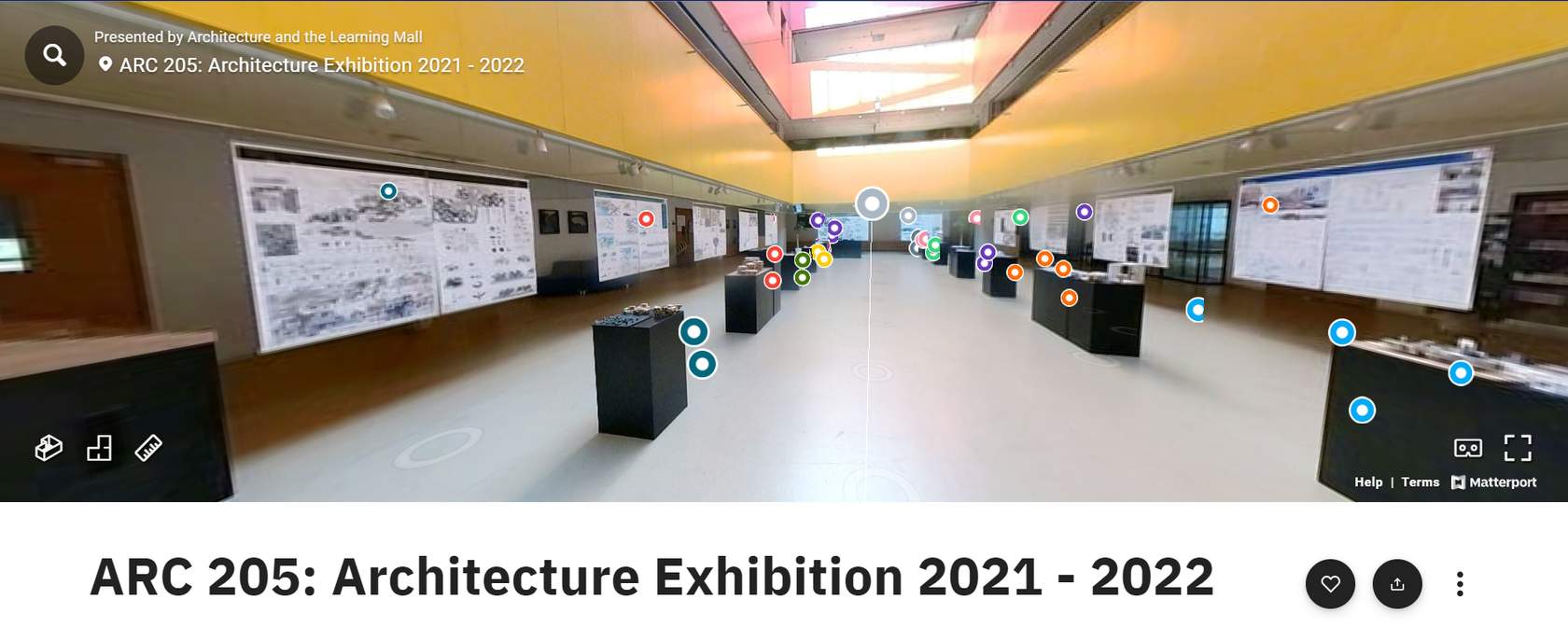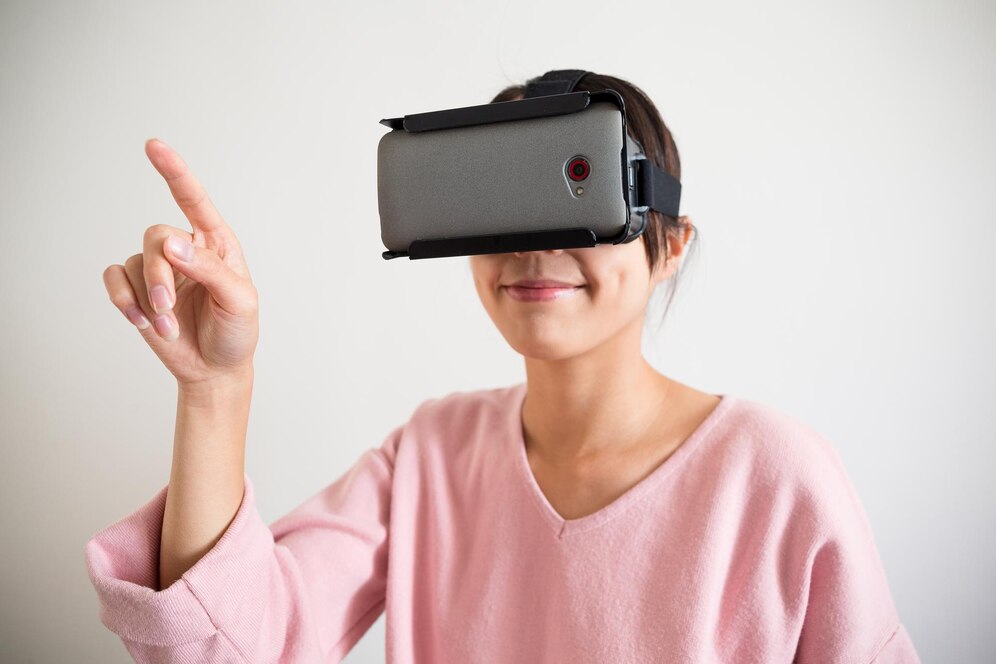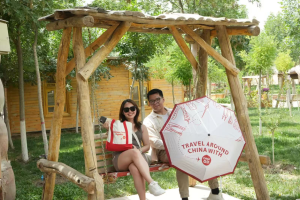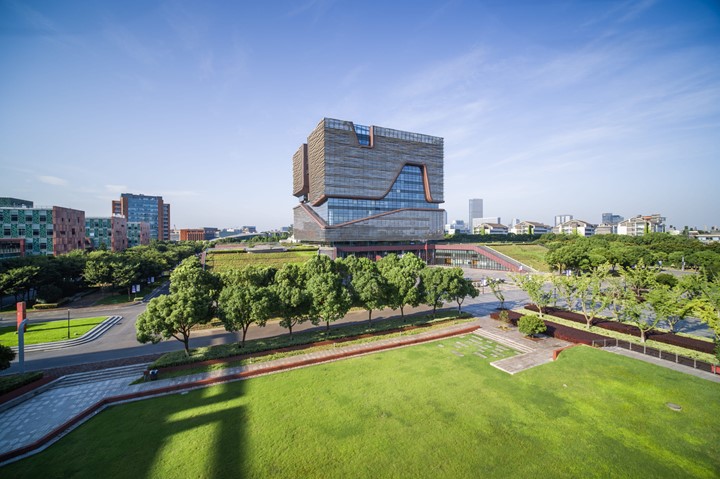Key Points
The Peer Assessment activity provides an opportunity of:
The Virtual Exhibition provides an opportunity for:
- Effective student learning outcomes when a physical exhibition is impossible;
- An immersive online learning experience;
- Easier sharing and connecting with student cohort;
- Innovative approaches for learner engagement.

Case Details
The project created an immersive virtual exhibition for students to share their architectural work and to connect with their peers during COVID-19.
Due to COVID-19, students lost access to the campus and the opportunities to share their projects with peers and staff members. I tried to build something to recreate that learning opportunity for my students virtually with technologies that I learned in PGcert 404, for example, H5P.
However, one limitation about using H5P is that it uses static images. I would like to add an emotional side to the virtual environment because my students spend most of their days in the building, which is like their second home. For this reason, I cannot use static images, but instead must develop a more immersive context to allow students to feel like they are inside the building. By using a 360 camera and the Matterport platform, we scanned the walls of the exhibition hall on the first floor of the design building, collected all the models that our students left there, set up this exhibition, and released the content to the department.
An exchange page was created for the virtual exhibition on the Learning Mall where students could share knowledge about the design or about the software they were using, or the rendering or modelling of their virtual models. This is a double way to deliver aspects of knowledge. It is important that students can share their own experiences and skills amongst themselves for their personal growth.
They were curious and excited about this new experience. One student sent me an email expressing her gratitude and offered to share the results of her hard work during the semester with parents, relatives and friends who cannot travel to Suzhou during the pandemic. When students were able to return to campus, many said, “Thank you very much for this experience. We enjoyed it a lot. It was a different way to visualise our project and to celebrate our success and especially to share with our family and friends”. This small activity was, therefore, extremely helpful.
No creative process is truly complete until it manifests a tangible reality. Whether y
Silvia: I learned a lot about a different use of technology, not as just a tool, but as a context, because I tried to recreate a familiar space, a sentimental atmosphere, and an emotional aspect. Technology cannot just be an element to reach a goal or to solve a problem, but as a means to enhance human emotions. Sometimes, technology can reduce human interaction and a sense of community. However, in this case, I started to understand how to use technology in a more humanistic way. This is my biggest takeaway. I am now more open to the use of technology and incorporating an emotional side.
Na: This is also a perfect example of how EDU collaborates with teachers in different disciplines and the Learning Mall team. This activity was student-centred based on the connectivist learning theory, as students mentioned they were happy to share their learning outcomes with family and friends through their social networks. This provided students with more opportunities for formal and informal learning, and it was also an authentic assessment as they could use the learning outcomes for their future career development.
Silvia: My biggest tip is to try to create your own network within the university. Even though your idea may just be at its initial stage, you can connect with other experts in other disciplines who can provide different points of view and support you in solving problems. I started to understand how different the educational realm is, and how important it is to build connections with different staff at the university for strategies and solutions. Sharing is the most important step.
Na: first, from a pedagogical perspective, we need to make sure what we want to do helps improve the student learning experience. Second, we need to closely examine the available technologies and decide what is the most suitable. Finally, we designed this project for the pandemic lockdown situation; but we need to think about it as a future-oriented initiative that can be useful in whatever situations we face in the future.
Technological Toolkit






Overview
Arch. Silvia Albano together with Dr. Na Li from the Academy of Future Education and Mr. Kenneth Simmons from the Learning Mall created a virtual exhibition using Matterport, allowing her students to showcase their work with their peers and external audiences during the pandemic. It also helped students to maintain an emotional bond with each other and their teacher during the challenging time.
Matterport is a leading spatial data company with the primary goal of digitising the world of buildings. Its 3D data platform enables XJTLU lecturers to turn any space into an accurate and immersive digital twin, which can be used to design, build, operate, promote, and understand a building at every stage of its lifecycle.
Click to visit the virtual exhibition ☞https://matterport.com/discover/space/7AGcpAYGi5D